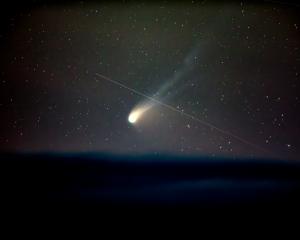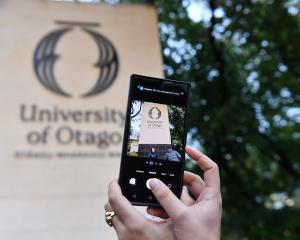Inspired by the Otago Natural History Trust's success at Orokonui Ecosanctuary, people north of Dunedin are now thinking ''Beyond Orokonui''. Rhys Millar reports.
What is possible beyond Orokonui?
This question has occupied the minds of a diverse group of people over the past 18 months.
The community advisory group on the ''Beyond Orokonui'' project have been meeting regularly to discuss aspirations and action plans for enhancing the environment in the area of Otago's north coast that surrounds the Orokonui Ecosanctuary.
When the group talks of the area surrounding Orokonui, we cast a fairly wide net. Covering 55,000 hectares, the scope of the project area is significant.
From its southernmost point in urban North Dunedin, it extends through the Silver Stream valley to the Silverpeaks and Waikouaiti River catchments.
The project area is notable for the presence of strong geological, climatic and vegetation gradients, and the large amounts of indigenous vegetation cover within its bounds.
Much of the landscape is pastoral, but there are also many large protected conservation areas.
These include Orokonui Ecosanctuary, Hikaroroa/Mount Watkins Scenic Reserve, Silverpeaks Scenic Reserve and many privately owned covenanted conservation areas.
Surrounding these protected areas, a network of forest patches and tussocklands has the potential to form ''corridors'' that would allow populations of plants and threatened bird species, such as kaka and South Island robin, to disperse across the wider landscape.
A charitable trust, the Landscape Connections Trust, has been co-ordinating the development of the vision and strategy for restoring and enhancing the designated area.
The actual content of the strategy, however, has been driven by an advisory group made up of stakeholders from within the north coast community.
The diversity of this group is its strength.
It is made up of farmers, conservationists, lifestyle block owners, and representatives from Kati Huirapa Runaka ki Puketeraki, the Department of Conservation and the Otago Natural History Trust.
Despite the potential for conflicting priorities, these people have been straightforward and upfront about what is most important to them, and to their neighbours and peers.
Inevitably, there have been some differences of opinion, but these are underpinned by a shared belief in working together effectively to enhance the north coast environment.
It seems that the shared passion for and appreciation of the distinctiveness of the north coast has overcome any incompatibilities.
The initial impetus to enhance the biodiversity across this landscape was provided by Orokonui Ecosanctuary, its incredible successes, as well as the lessons being learned.
Expanding Orokonui's biodiversity values beyond its predator-proof fence is an ambitious but achievable endeavour, and has the potential to spread rich, flourishing biodiversity throughout the wider north coast landscape.
The community advisory group has determined a further goal: as important as biodiversity gain, there is also a need to manage and enhance the environment so as best to enable it to continue to sustain those living on the north coast.
The ability to swim and kayak in the rivers and estuaries, and to grow and gather food, are benefits of a healthy natural environment.
These aspects of life also contribute to the individual wellbeing of local residents, as well as their lifestyles, and for some, their livelihoods.
Within the actions planned for environmental management and enhancement the group has also identified an important opportunity for employment and earning opportunities.
The community group is clear on the need to move beyond a written strategy and into practical action on the ground. Already, priority projects have been identified.
Matai-totara forest, kowhai-broadleaved forest and other ecologically important dry forest types will be enhanced and protected, as will highly threatened forest fragments along the coast.
These projects will focus on helping willing and supportive landowners to care for forest areas on their own land, reintroducing threatened plant species where appropriate.
Potential future projects may include seabird restoration, focused on coastal headlands including Heyward Point and Mapoutahi.
These sites have the potential to be protected from predatory mammals through intensive trapping, meaning that they could provide breeding sites for bird species such as the sooty shearwater.
Of all of the planned ''Beyond Orokonui'' projects, the ''Orokonui halo'' has received the most discussion to date.
Through co-ordination among landowners there is an opportunity to develop an area beyond Orokonui Ecosanctuary's pest-proof fence into an intensively managed low-predator environment.
The result will be increased areas of safe habitat for threatened bird species.
This will include areas where people are living, meaning more opportunities for encounters with these rare birds.
• Rhys Millar is project manager for the Landscape Connections Trust.
Feedback
• These ideas have come from the community advisory group, as well as from the dozens of people we have spoken to so far. Some ideas are shared on our website, www.beyondorokonui.org.nz.
We would appreciate your feedback on these ideas, and also your thoughts. Please take a look.












